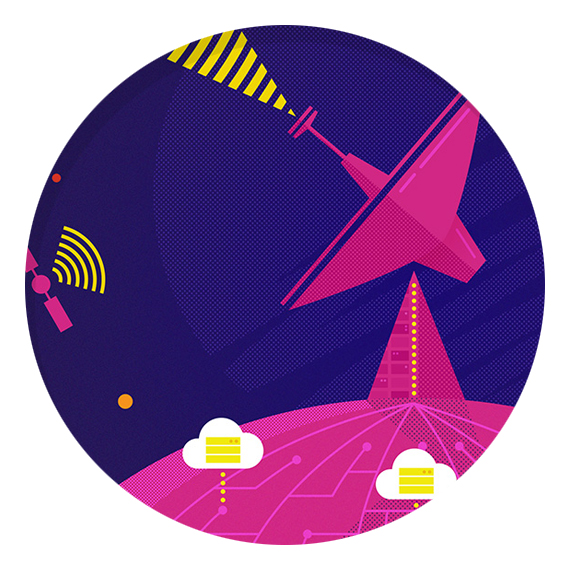Satellite data from Sodankylä offers unlimited possibilities also to application developers

The national satellite service centre in Sodankylä receives and archives observations that satellites transmit from Finland, Europe and the whole northern hemisphere in nearly real time. In addition to receiving satellite data, Sodankylä also serves as one of the Collaborative Ground Segments of the European Space Agency ESA, which means that data is also available from satellites that Sodankylä does not receive data from.
Various bodies, such as the environmental and security authorities and research institutes, have for a long time used satellite observations. Data transmitted by satellites is already used e.g. in meteorological services, flood prediction systems, ice services and shipping. "With the help of this data we can be better prepared for natural disasters and dangerous situations caused by the weather and climate," says Jouni Pulliainen, Research Professor at the Finnish Meteorological Institute (FMI). The long time series obtained from satellite observations can also be used e.g. in climate change research. The data is important especially in Arctic regions, where the effects of climate change are already particularly strongly visible.
Satellite data is hoped to create new business
According to Matias Takala, Research Scientist at the FMI, the data would have a lot more to offer to an even larger number of users. "In the long term, I believe that some entirely new business will at some point be created based on this data. Big breakthrough products have not been created yet, although in principle, this could also have happened. For such products, new uses of data should be discovered and data should be combined in ways that we have not seen before. On the other hand, the best ideas can be very simple," says Takala.
Satellite data has been taken advantage of slowly because basic knowledge and also some expertise in natural sciences are required to use the data. "We have a lot of the required expertise at the FMI and we have therefore documented the data in different ways and organised training. For example, at end of November, we will participate in the Junction Hackathon at Slush together with ESA and will that way strive to share our expertise and create contacts. Satellite data offers unlimited possibilities for new innovations and product development, but also for creating shared ecosystems and partnerships between the private and public sectors," Jouni Pulliainen says.
Satellite data available in many ways
The infrastructure of the Sodankylä national satellite service centre has undergone intensive development in the past few years and the large masses of satellite data are now available through a machine readable interface. In principle, a lot of the data are entirely free. "We want to offer different open interfaces through which applications can be made. The satellite data interface is currently separate from the FMI's other open data but, in practice, both are based on the same form determined by the INSPIRE data model," says Takala.
In addition to open data, Sodankylä also offers cloud services that clients can use to run calculations themselves using the FMI's servers and obtain the final products directly from the service. This way clients do not need to download all of the data to their own servers, which is a great benefit when dealing with large masses of data like satellite images.
Observations are also forwarded to users according to their needs, for example, as raw data received directly from the satellite or as a highly refined final product, such as a map of the snow water equivalentin the northern hemisphere. "Only a fairly small group of people is able to use raw data, so we also try to create products that already include FMI's expertise. Sentinel satellites transmit images with a resolution of up to 10–20 metres. It might be possible to implement a service in which fresh satellite images could be used to, for example, check the cloudiness of the lake or sea water by your summer house once a day," Research Scientist Matias Takala describes the services.
The collaboration partners of the Sodankylä national satellite service centre include the European weather satellite organisation EUMETSAT, the European Space Agency ESA, the EU's Copernicus programme and national organisations from different countries, such as NASA and NOAA from the United States. The reason for the large number of collaboration partners is Sodankylä's location, which is convenient for receiving data from polar orbiting satellites, i.e. satellites whose orbits pass over the poles. However, the capability of the Sodankylä station to receive data from many different satellites and the station's comprehensive observation and measurement equipment that can be used to verify the satellite measurements also contribute to the collaboration.